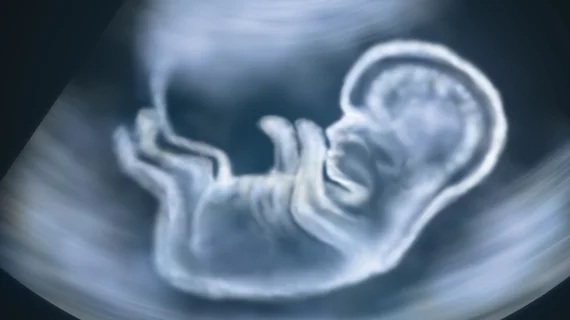Artificial placenta created using 3D printing
Researchers at TU Wien—a university in Vienna, Austria—have created an artificial placenta by using a 3D-printing process, according to a recent study.
In a release, researchers noted that the placenta allows for the exchange of important substances between a mother and unborn child. Previously, it had been nearly impossible to conduct research on how that transfer works.
"Using a specially developed femtosecond, laser-based 3D-printing process, it is possible to produce customized hydrogel membranes directly within microfluidic chips, which are then populated with placenta cells," the press release stated. "This means it is now possible to provide clarity in some vital research issues, such as the exchange of glucose between mother and child."
In order to create the placenta using 3D printing, researchers used a process involving materials that could be solidified with laser beams.
“In our case it involves a hydrogel with good biocompatibility," TU Wien Professor Aleksandr Ovsianikov said. “Based on the model of the natural placenta, we produce a surface with small, curved villi. The placenta cells can then colonize it, creating a barrier very similar to the natural placenta.”
Research is now being done to replicate "organ structures on compact chips in order to investigate important aspects of their function under controlled conditions."
“Our chip consists of two areas—one represents the fetus, the other the mother," research team member Denise Mandt said in the release. “We used a special 3D-printing process to produce a partition between them—the artificial placenta membrane.”
The artificial placenta was also created using "organ-to-chip" technology. The technology allows "important biological parameters (to) be closely monitored, such as the pressure, temperature, geometry and nutrient supply of the mini organs, as well as the administration of medications. This makes it possible to accurately observe disease progression and cure rates."
"Initial tests have already shown that the artificial placenta on the chip does in fact behave in a similar way to a natural placenta: small molecules are allowed to pass through, while large ones are held back," the release stated. "The model is now intended to be used specifically to investigate important aspects of nutrient transport from the mother to the fetus."

